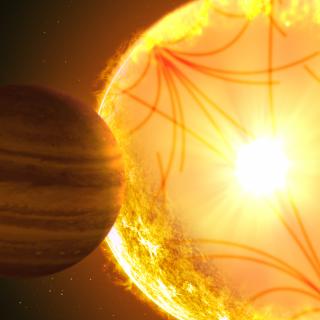Bibcode
Roberts, John D.; Pinsonneault, Marc H.; Johnson, Jennifer A.; Zinn, Joel C.; Weinberg, David H.; Vrard, Mathieu; Tayar, Jamie; Stello, Dennis; Mosser, Benoît; Johnson, James W.; Cao, Kaili; Stassun, Keivan G.; Stringfellow, Guy S.; Serenelli, Aldo; Mathur, Savita; Hekker, Saskia; García, Rafael A.; Elsworth, Yvonne P.; Corsaro, Enrico
Bibliographical reference
Monthly Notices of the Royal Astronomical Society
Advertised on:
5
2024
Citations
12
Refereed citations
7
Description
The surface [C/N] ratios of evolved giants are strongly affected by the first dredge-up (FDU) of nuclear-processed material from stellar cores. C and N also have distinct nucleosynthetic origins and serve as diagnostics of mixing and mass-loss. We use subgiants to find strong trends in the birth [C/N] with [Fe/H], which differ between the low-α and high-α populations. We demonstrate that these birth trends have a strong impact on the surface abundances after the FDU. This effect is neglected in current stellar models, which use solar-scaled C and N. We map out the FDU as a function of evolutionary state, mass, and composition using a large and precisely measured asteroseismic data set in first-ascent red giant branch (RGB) and core He-burning, or red clump (RC), stars. We describe the domains where [C/N] is a useful mass diagnostic and find that the RC complements the RGB and extends the range of validity to higher mass. We find evidence for extra mixing on the RGB below [Fe/H] = -0.4, matching literature results, for high-α giants, but there is no clear evidence of mixing in the low-α giants. The predicted signal of mass-loss is weak and difficult to detect in our sample. We discuss implications for stellar physics and stellar population applications.
Related projects

Helio and Astero-Seismology and Exoplanets Search
The principal objectives of this project are: 1) to study the structure and dynamics of the solar interior, 2) to extend this study to other stars, 3) to search for extrasolar planets using photometric methods (primarily by transits of their host stars) and their characterization (using radial velocity information) and 4) the study of the planetary
Savita
Mathur